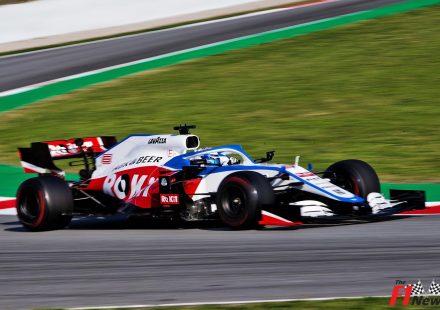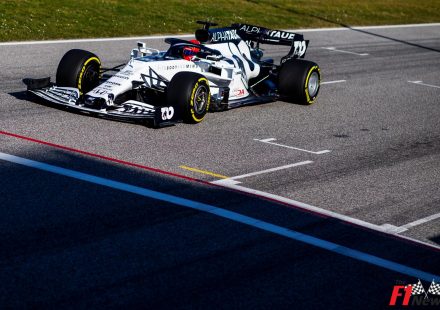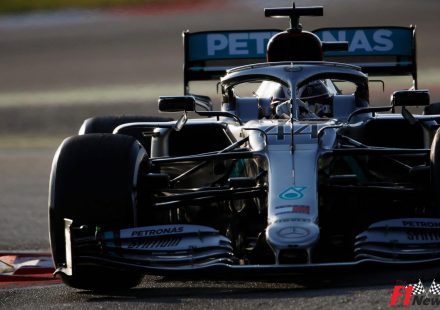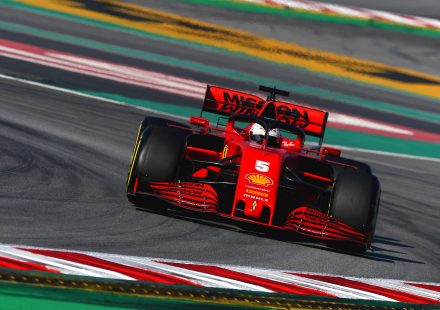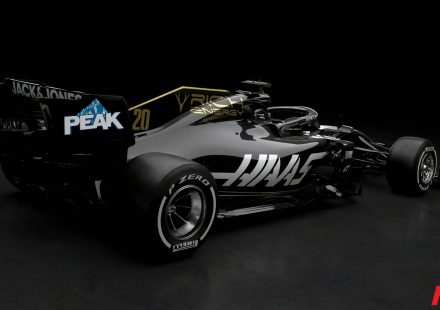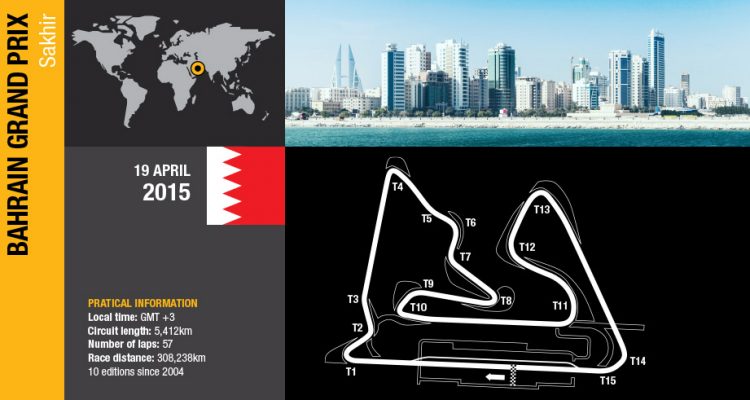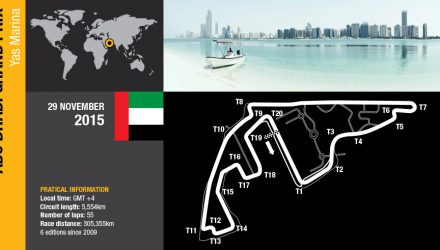CYRIL ABITEBOUL, MANAGING DIRECTOR
We have made some real progress since Australia with regards performance and driveability and it’s frustrating that the reliability issues of Shanghai threw a cover over these. We don’t take the issues we have seen lightly, but we have taken genuine steps forward and need to focus on our continuing programme of improvements while addressing the reliability concerns in parallel.
In the short time since the Chinese Grand Prix we have been checking and rechecking systems and procedures to implement fixes for the next race in Bahrain. Due to logistics of the back to back races a complete guarantee will be difficult but we have made improvements to prevent the race stoppers we saw in China. Our motivation is as high as ever.
RÉMI TAFFIN, DIRECTOR OF OPERATIONS
The Bahrain International Circuit is relatively similar to Shanghai with extended periods of wide open throttle and long straights. We go there knowing it may not play to our strengths, but there are still opportunities to take the fight to the front of the field. Our Power Unit has moved forward in driveability and although there is still some room to play with, this should pay off in the twisty back section and under braking at the end of the straights.
As well as optimizing performance, a significant part of our preparations for this race have been and continues to be analyzing the issues from China. As a consequence, we will have to make some late calls. We now know that the failures on Kvyat and Verstappen’s ICEs are different and unfortunately one of them was known but built in when then ICE was introduced early on. The other is still to be fully explained and temporary fixes will be used in Sakhir.’
POWER UNIT DETAILS
ICE
The Bahrain International Circuit features four long periods of wide open throttle. The first is the pit straight, at 1km long, followed by the 520m sprint between Turns 3 and 4. Another 520m burst between Turns 10 and 11 and 600m from Turns 13 to 14 creates a total of 2,640m flat out in a straight line. With a circuit length of 5,412km these four straights equate to some 50% of the lap.
With a further couple of short squirts of power added to the mix, the total wide open throttle time comes to a touch over 60%, on a par with Sepang and Montreal.
The average speed over one lap is approx. 200kph.
Bahrain’s arid climate can have severe consequences for the ICE. Pressure inside the cylinder rises and knock can be a real problem. Ignition timing is therefore very tightly controlled and checked to prevent issues developing.
Temperature in Bahrain is actually not a major issue. Due to the race and qualifying taking place at the end of the afternoon, temperatures drop to around 25°C, or normal ‘European race’ conditions.
The braking points at the end of the straights call for particular engine maps. Coming after a long period of wide open throttle, the braking phase is a lot heavier and cylinders are cut for longer. As a result their temperatures drop and getting them firing again correctly is incredibly important.
TURBOCHARGER
As at all tracks, getting the turbo response correct is crucial and a lot of time is spent developing maps to get a good torque response.
Alongside Turn 1, the exit of Turn 14 is one of the most difficult turns, but it must be completely correct. The exit falls slightly off camber as it enters Turn 15, but the driver has to get the line right as it is proceeded by the 1km pit straight. Finding the right balance between aggressive set-up and balance is a tricky balance.
MGU-K
The long straights are followed by heavy braking points, providing the MGU-K plenty of opportunity to recover energy lost under braking. Turn 1 creates the heaviest load as the cars brake from 325kph at the end of the straight to 65kph and 2nd gear.
Likewise Turn 4 generates a large amount of energy since the cars brake from a sustained period of wide open throttle. Around 27% of the energy recovered under braking comes from Turns 1 and 4.
Sector two from Turn 5 through to Turn 8 and Turns 11 to 13 contains a further eight braking points. Enough energy is recovered over one Sakhir lap to keep the battery at a high state of charge throughout the race.
MGU-H
The long straights give a steady stream of exhaust flow to the MGU-H. This is particularly important since fuel consumption over one lap is extremely high due to the frequency of heavy braking and acceleration. Sakhir has in fact the second highest fuel consumption per lap per race of the year after Montreal.
RENAULT 2015 FAST FACTS
Renault Sport F1 has an operations room at its Viry-Châtillon headquarters. Over a race weekend the ops room works in real time with the track, accessing the data received from the cars and the team. At least eight people – the equivalent of a full engine team trackside – are operational round the clock from around one hour before FP1 on a Friday until the end of FP3 on a Saturday.
The team checks the data from the cars and is in constant communication with the trackside team, looking at results, information and any concerns raised. This is then sent onto the relevant department and personnel within Viry for further treatment.
The Viry dynos also support the track operations during a GP event. At least one dyno is running throughout Friday running according to track needs. An improved engine map or software change may be tested in the dyno, for example, and then fed back into the trackside team’s plans.
The remaining dynos at Viry still test future developments, but depending on the nature of a trackside problem or urgency, the dyno department will organize a testing plan to mobilise more personnel or dynos. The majority of personnel working in the dyno management and ops room have trackside experience so know how to prioritize plans and work quickly to meet the needs of the track.
More than four tonnes of freight were sent from Viry to the first four races of the year. The freight arrived in Australia and was then sent on to Malaysia, China and Bahrain with the F1 official cargo. A consignment of 500kg was also sent via sea freight to each race. Added to this, a further tonne of equipment with latest specification parts, upgrades and so on was sent separately by air freight to each of the four races. That’s approximately ten tonnes of equipment shipped around the world in just six weeks! Bear in mind that an engine weighs around 145kg…
FOCUS ON…BAHRAIN GP 2012
The desert sands of Bahrain have brought good fortune to Renault, with forty percent of the races held at the Bahrain International Circuit won by a Renault-powered car. Fernando Alonso started the winning streak in 2005 with Renault F1 Team and stood on the top step of the podium once more the following year. In 2012, Renault power claimed a 1-2-3-4 result and locked out the podium in 2013.
At a circuit taken at 60% wide open throttle and a climate that makes engines work hard, the French manufacturer is justifiably proud of its pedigree in Manama.
Director of Operations, Rémi Taffin, remembers: ‘The first year we went to Bahrain, we really weren’t sure what to expect as we had never raced in a desert climate before. We’d been to hot places and dry ones, but never both at the same time. Also when you looked at the track map, with the long straights and tight hairpins we knew it would be punishing.
We learnt a lot very quickly, but the preparation for the race was massive, with lots of work in the dyno beforehand, and an incredibly busy programme on the Friday. The first year we finished fourth, but when we returned in 2005 we’d done our homework and knew we had a good car. Fernando [Alonso] won quite easily that year.
In 2006 we had a tougher time – Giancarlo’s car had a problem, so it shows how close to the limit we were, and how crucial getting everything right was.
‘It took us until 2012 to win again, unfortunately. Going into the race that year, the championship was wide open and we knew that wins were really up for grabs, but everything had to be perfect. We had strong teams that had produced very good cars, but three different teams had won the first three races.
We managed to join everything up with both Red Bull and Lotus for this race, but it was very nerve-wracking seeing four of your cars fighting on track…it could be an all or nothing scenario, particularly when Kimi [Raikkonen, racing for Lotus] was challenging for Seb’s lead! Watching in the engineering office you could barely watch at times as Kimi was really going for it, and both could have gone out.
In the end the racing was very clean, but everyone’s pulses were very high… The icing on the cake was getting third and fourth, but we didn’t take anything for granted until the flag, particularly as everyone was so competitive. The McLarens were close and tyre degradation was a real issue at the end of the race.
‘In 2013, the last year of the V8s, we knew everything we possibly could about the engines and how to optimize, but we wanted to finish the era as successfully as we could. We started the year well and then it got even better in Bahrain with a 1-2-3 result. It set the precedent for the rest of the year to a certain extent.’

